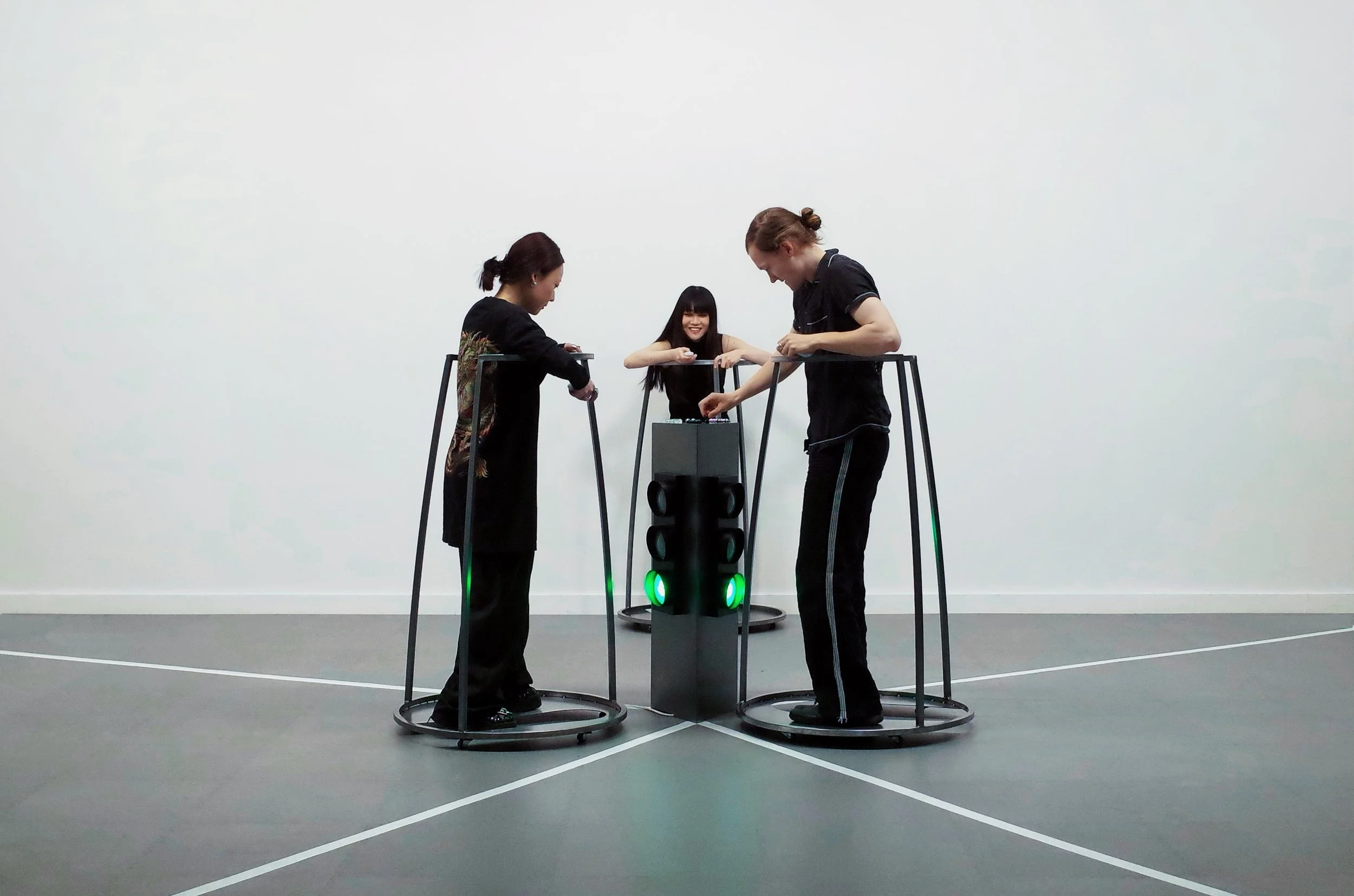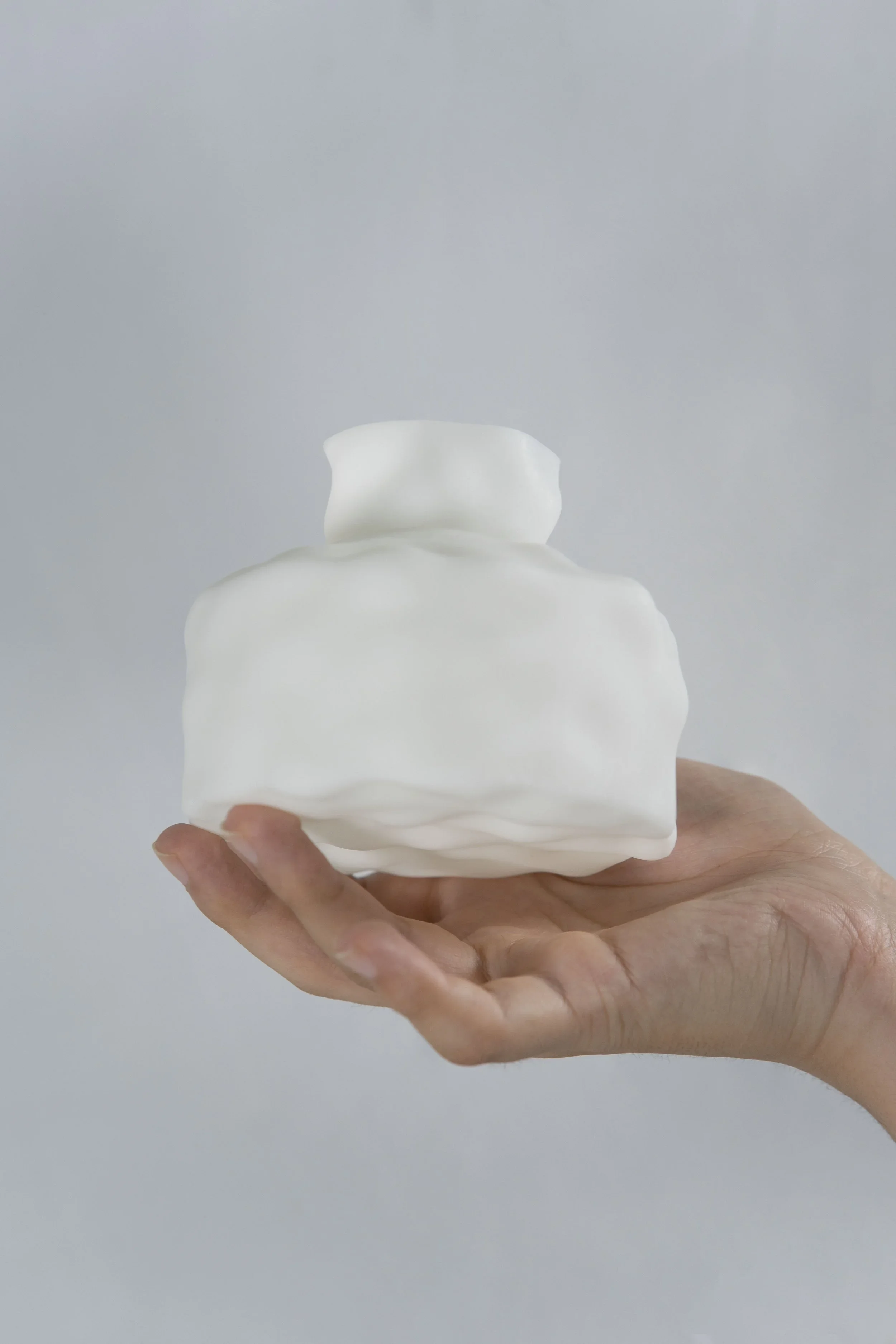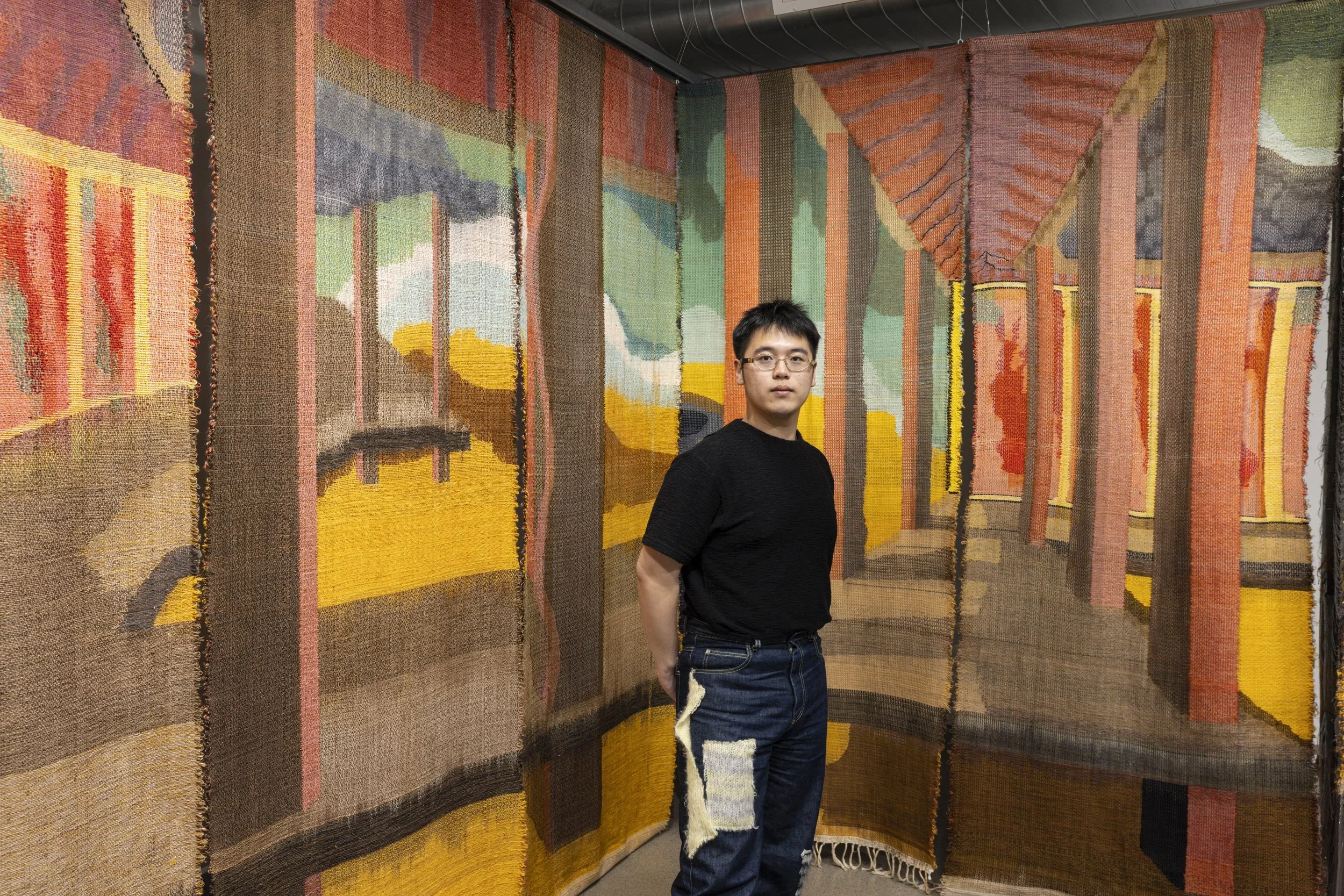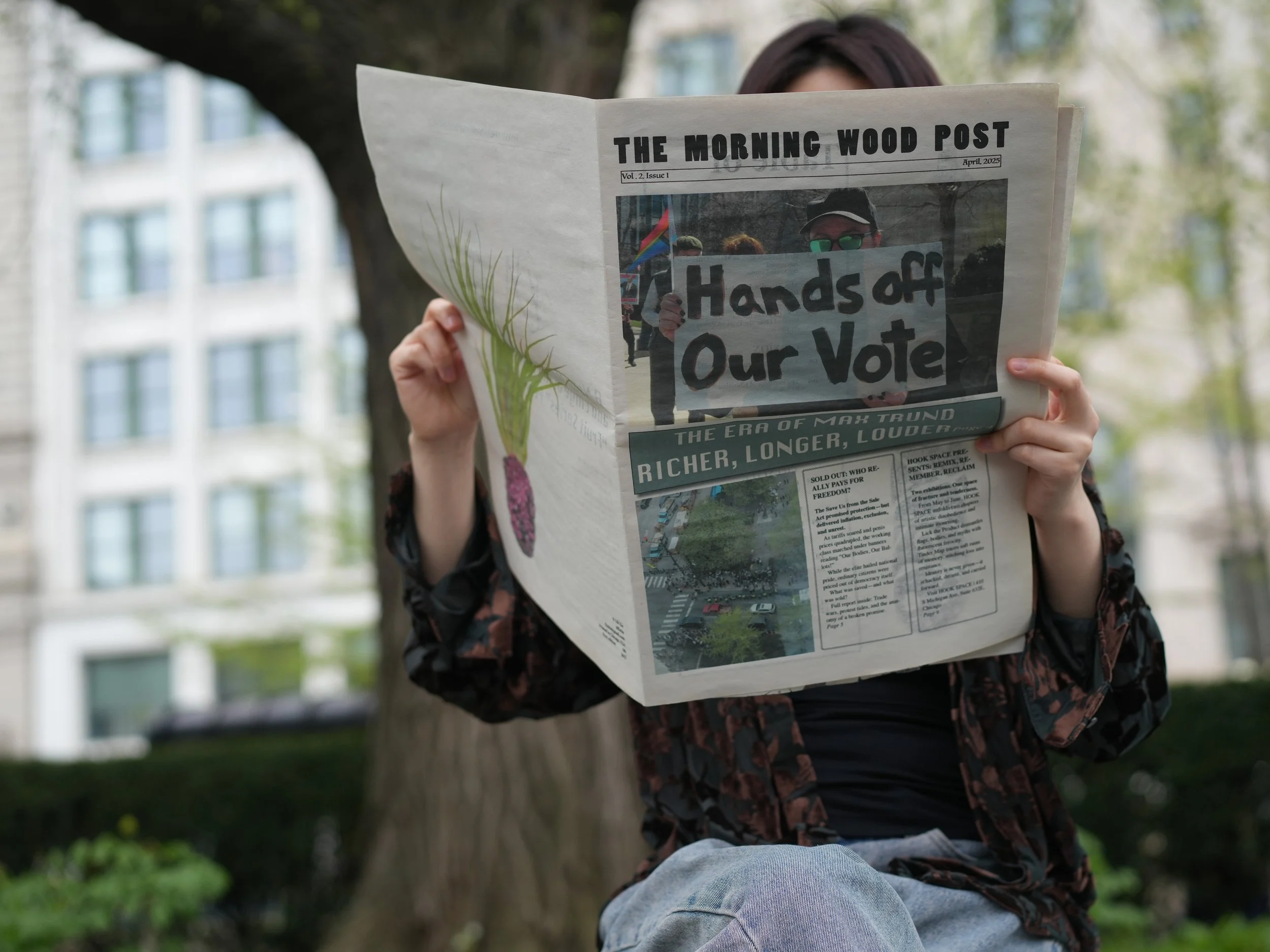10 Questions with Dhanny 'Danot' Sanjaya
Dhanny 'Danot' Sanjaya (born in Banjarmasin) completed his study of Visual Communication in 2007, in Tangerang, Indonesia. His long-term art project, Ichthyhumanology Institute, is a fictional institution that presents studies on the natural relationship between humans, fish and the sea; and offers research methods as a medium to re-examine how we position ourselves within the environment with other organisms. Dhanny also initiated Studio 75, a design workspace in Tangerang where he lives and works now.
Dhanny Sanjaya Portrait
ARTIST STATEMENT
Dhanny described the starting point and the work process of his works are research methods and collecting stories. Danot chose the fish as a metaphor and as the object of research that would lead him to the context of environmental sustainability and the aspects of political-economy surrounding it.
On his last project “Petrifish - A story from Oyo river“, Danot uses various stories and data found in his observation as a base in building the narrative of his work. His work draws out the subject of the lost fish population in the ocean to the story of the river and consumption pattern of the local community. Dhanny presented a fictional laboratory of Ichtyhumanology Institute that grew meat with local fish cells. He displayed a picture of a dark and polluted river in the lab to emphasize this condition. Dhanny presented a futuristic imagination about food technology and the sustainability of human life and indirectly presented an irony that all this could happen if the river, marine and fish ecosystems in it had been destroyed because of excessive human consumptive behavior.
Ichthyhumanology, mix media installation, variable dimensions, 2017 © Dhanny Sanjaya
Ichthyhumanology | PROJECT DESCRIPTION
What can we imagine about the earth in the future?
In the Ichthyhumanology Institute project, I created a fictional institution that extends and focuses on the relationship between people, fish and the sea. What will the future evolution of humans be, when the oceans have submerged the land on earth? Perhaps we can learn the key to evolution from fish, and look at the long journey of human evolution as close to the ocean. Our ability to survive here will be pushed to the very limit and perhaps the idea of humans existing as marine mammals is not impossible at all. Through our extraordinary adaptability, we have been able to push the boundaries of our survivors to the sea and we have immersed ourselves deeper into the sea, which has a profound effect on our lives.
Ichthyhumanology, mix media installation, variable dimensions, 2017 © Dhanny Sanjaya
INTERVIEW
First of all, introduce yourself to our readers. What are your history and your artistic background?
What I recall the most when I remember my fascination with visuals was that from a young age, I had scratched the walls of my house and was forced to remove all of the pictures by my parents while crying. I think that visual interest has been around since then, not much different from the average child. I aspired to be a painter and wanted to be a robot maker because I really liked drawing robots at that time.
I actually never received formal art education. I am a Graphic Design graduate and initially felt that these two things were two different even though the fields were close. But later on, I felt that what I gained from my education and design work helped me to make art.
Since graduating in 2007, I have worked in the design and advertising field, but I still continue to draw as a form of my interest in the arts. In 2009 I had my first opportunity to join a group exhibition through an open submission. Since then, I have just started to explore the arts further. I try to see more exhibitions read, watch and discuss to expand my references.
At the beginning of my artistic practice, I used to do a lot of drawing and painting. I worked with issues such as gender and personal freedom. 2013 was the beginning; I started experimenting with installation and mixed media and expanded the scope of my themes. I started talking about environmental issues in 2016-2017, but I think my interest and closeness to that has been there since I was a child. I live and have moved between provinces in Indonesia, following my parents to work. During that time, my parents worked in the plantation and forestry sector, and in one province, I lived in an area close to the coast. I feel lucky I was able to grow with all of these things. And I feel that I owe a debt of gratitude to the nature that has provided me with life.
Petrifish, mix media installation, variable dimensions, 2019 © Dhanny Sanjaya
Petrifish, mix media installation, variable dimensions, 2019 © Dhanny Sanjaya
You are the founder of "Ichthyhumanology Institute." Could you tell us more about the project? What are the main themes you wish to touch?
This project started in 2017, when I participated in the EXI(S)T group exhibition at the National Gallery, Jakarta, Indonesia. The theme of this exhibition was "Tomorrow as we know it", this group exhibition invited artists to predict and interpret the future in terms of their personal interests.
At that time, I was reading a lot about the issues of global warming, environmental damage, and sea-level rise in the future. I tried to imagine a future scenario when the sea level rise has submerged almost the entire land on Earth. Homo Sapiens will be "forced" to adapt to this new environment. The adaptation process has shaped us to continue to evolve and survive the changes that occur in the Earth's environment.
I combined several theories and the results of my research and then merged them into one speculative theory about future human evolution. One theory that I take is humans who will physically evolve to resemble fish. Perhaps the way to survive in the future when there is no land is to learn from fish. Fish are considered to be the earliest ancestors of vertebrates, and some of the unique characteristics of the human body were inherited from fish.
To present these data in a visual form, I created a fictional institution named Ichthyhumanology Institute, which comes from the word Ichthyology + Human. I am interested in imagining that the data and my research can be visualized by borrowing how an institution or museum displays its work and research. This fictional institution eventually became my vehicle for addressing the environment, especially oceans, including fish and humans. In future developments, the scope of my work is to also bring up issues that occur in rivers.
With this Ichthyhumanology works, I try to imagine alternative forms of the future. Speculations might occur, and I try to ask "how do we see our future and our environment?" By talking about the future, we may make it an afterthought or a better alternative in taking action into the future.
You are also very engaged in environmental issues and sustainability. What do you think is the future for art, on that matter?
I can't give a definite answer about it, but I think in this time when life is getting more complex and fast, changes to the environment are also increasingly massive. Art should also have a role in voicing the problems that exist in the world. Art should penetrate and increase the knowledge of the audience or even reinforce the knowledge they already have. I think art is related to life itself; it flows with the times. So I think there will be more fellow artists who will raise themes like this in the future, and other social issues that are no less important, because this is a situation that we are currently facing together.
Petrifish, mix media installation, variable dimensions, 2019 © Dhanny Sanjaya
Petrifish, mix media installation, variable dimensions, 2019 © Dhanny Sanjaya
Petrifish, mix media installation, variable dimensions, 2019 © Dhanny Sanjaya
Is there any artist or recent research you are particularly following about the environment and sustainability issues?
For now, there are no specific artists and research that I follow. But I have been following a lot of artists and reading materials related to this issue, and some of them have become references and inspiration for me to work on. One of the books that enriched me the most is "Sapien" by Yuval Noval Harari. Apart from that, I draw inspiration from articles in online media. I also still enjoy reading newspapers and sometimes collect some news and make them into clippings, especially those related to my interests.
You focus on important themes and convey meaningful messages with your art. What is your creative process like? What aspect of your work do you pay particular attention to?
I usually start by researching and reading various articles, books and sometimes even by watching movies. Then when the issues and concepts I wanted to bring up are already there, I start thinking about their visual exploration. Sometimes there are opportunities to research directly into the field and work with fellow activists or researchers, like what I've done in Cemeti Institute for art and society - Yogyakarta. At that time, I joined a residency program for three months; I had the opportunity to work with researchers and river activists. Apart from concept, visual presentation is also important because visual is the earliest doorway for how work can attract the curiosity of the public who sees it and can be a starting point for dialogue and discussion.
Where do you find inspiration for your works?
Mostly from reading articles and from visual references, sometimes also from watching movies and documentaries.
What do you hope that the public takes away from your work?
I think at least it can provide some new knowledge, bring up questions, or maybe raise doubts and curiosity, so that it can build a discussion.
The Silenced Ocean, mix media installation, variable dimensions, 2018 © Dhanny Sanjaya
And what is one new thing that, over the past year, you have discovered? Did you participate in any online exhibition or event?
I found that this pandemic is changing some of our habits and routines. Maybe it's like reminding us that nothing is fixed. Everything can change massively and quickly, especially if this is due to the consequences of our actions towards the environment and other living things. We also need to learn to live side by side with this virus. In an article that I read, viruses have become an important part of life on Earth. Without viruses, we'd lose a lot of the planet's biodiversity.
And yes, this year I had the opportunity to take part in an online exhibition. You can check it out at www.homeostasislab.org, where you can find one of my new works, an animated video in collaboration with some friends. In my opinion, it is important to continue to work and collaborate in this situation with online and digital platforms. It opens up opportunities for us to continue working and conveying ideas.
How much do you think the challenging times we live in now have impacted issues such as marine pollution because of the global pandemic? In other words, do you think that over the past year, people improved or reduced their footprint on the planet? Or, on the contrary, did we learn anything from this whole situation?
I hope we can learn from this situation. But I don't know; sometimes, I doubt whether we will really change or learn from it, especially when we have gone through this. My conversation with a friend about this ended in the thought that we might still be extinct and that it is our destiny in this life. I think it's not about saving the Earth, and maybe the truth is saving the human race. The natural cycle will continue to exist but will humans be able to survive?
Finally, what are your plans and wishes for the future?
I'm currently working on a commission art project to fill the artwork for a commercial building. I will have a group exhibition in CICA Museum - Korea, in August, and I am also developing some new ideas, and I want to finish the projects that I have been working on recently. I hope next year will bring more hope and opportunities.


























